In this article, you will learn what are the different types of electric motors? Their working and applications are explained with Pictures.
In addition, you can also download the PDF file of this article at the end of it.
What is Electric Motor?
The electric motor is defined as a machine that electrical energy into mechanical energy. Typically, electric motors are driven by the interaction between the magnetic field and electric current in a coil winding. Due to this, it generates force in the form of torque applied to the motor’s shaft.
Electric motors are basically powered by DC sources such as batteries, or rectifiers, and/or by AC sources such as power grids, inverters, or electric generators. The motors can be classified by considerations such as power source type, construction, application, and type of speed output.
Some different types of electric motors differ in how the conductors and the field are arranged. Also, it controls which mechanical output torque, speed, and position can be used.
Modern types of electric motors can provide convenient mechanical power for industrial use. Industrial applications include fans, blowers and pumps, machine tools, vehicles, and disc drives. Small-size motors are found in electric watches. Most of the main types are discussed below.
Read Also: How many types of electric circuits are there?
Types of Electric Motors
Following are the types of electric motors which are described below:
- DC Motor
- Shunt motor
- Separately excited motor
- Series motor
- Compound motor
- PMDC motor
- AC Motor
- Induction motor
- 1-phase induction motor
- 3-phase induction motor
- Synchronous motor
- Stepper motor
- Brushless motor
- Universal motor
- Hysteresis motor
- Reluctance motor
- Linear Motor
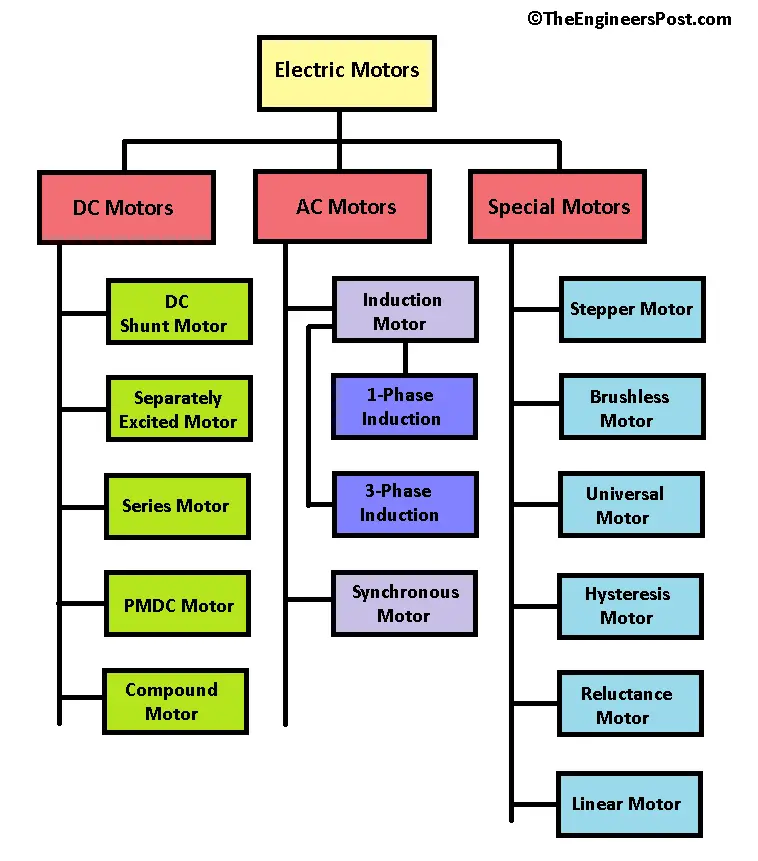
DC Motor
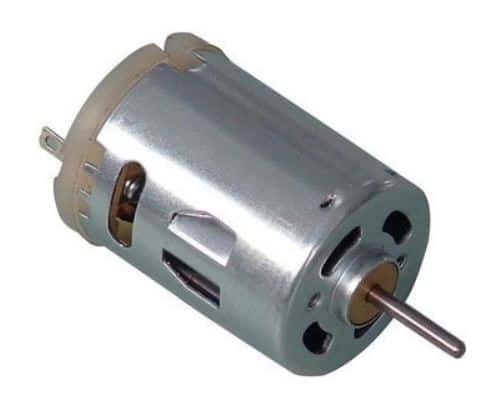
The DC motor is a type of rotary electrical motor that converts electrical energy into mechanical energy. This means that the input electrical energy is direct current which is converted into mechanical rotation.
The most common types of DC motors depend on the forces produced by the magnetic field. When a magnetic field is generated, a current-carrying conductor receives torque and develops a direction to move.
Almost all DC motors have some internal mechanism, either electromechanical or electronic that periodically changes the direction of the current in the motor. These motors vary in size and are used in toys, electric vehicles, lifts, hoists, and steel rolling mills.
1) Shunt Motor
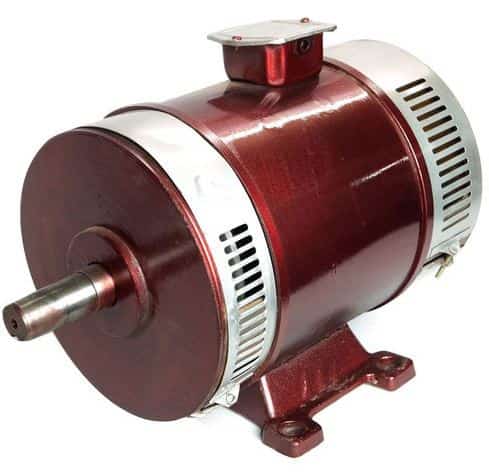
It is a type of DC motor where the field winding is connected parallel to the armature winding of the motor. Due to this, both motor windings will be exposed to the same voltage supply, and it maintains an inductive speed with any load.
Whenever a DC motor is turned on, current flows through the stator and the rotor. This produces two fields, i.e., pole and armature. Shunt motors generally have low starting torque and also run at a constant speed. This type of motor is used in centrifugal pumps, elevators, lathe machines, conveyors, spinning machines, etc.
2) Separately Excited Motor
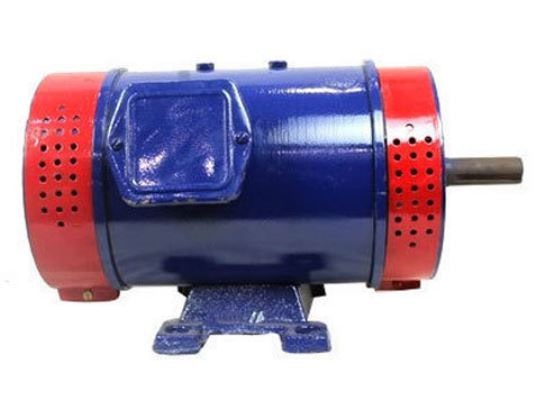
As the name suggests, in this type of motor, the main supply is given separately to the armature and the field winding. The advantage of using this motor is that the current from the armature does not flow through the field winding as the winding is energized by a separate DC source.
Separately excited DC motors are suitable for applications that require speed variation from low to very high values. These types of electric motors are commonly seen in steel rolling mills, paper machines, ship propulsion, and other applications.
3) Series Motor
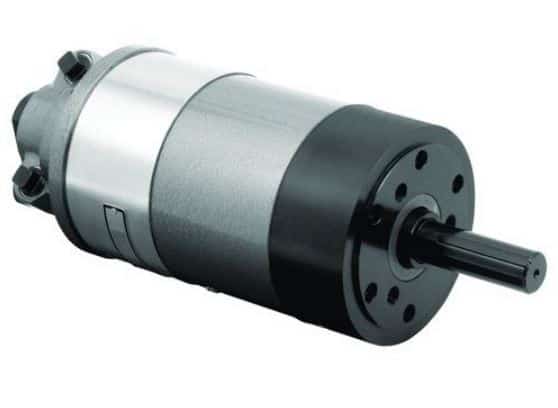
Series motors are a set of separately excited motors in which the field is connected in series to the armature winding, and thus, a high current passes through it. The function of a series motor is similar to other motors which convert electrical energy into mechanical energy.
In this type, a power supply terminal is at one end of the armature and the field coil. A current-carrying conductor cooperates with the external magnetic field whenever the magnetic field is nearly created, and then a rotational motion can be produced. These are suitable for both high and low-power drives for fixed and variable-speed electric drives.
4) Compound Motor
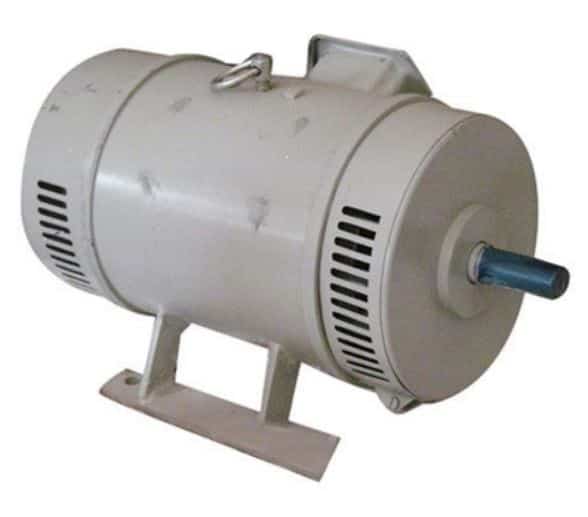
The compound motor is a combination of both series and shunt field coils connected to the armature winding. It carries the required amount of magnetic flux in the armature to generate the necessary torque to assist rotation at the desired speed level.
This type of motor has been invented to get better properties of both these motors. A shunt motor ensures an extremely efficient regulation of speed, whereas a series motor has a great and high starting torque. But, the starting torque is not as high as in the case of a series motor nor is their speed regulation as efficient as that of a shunt motor.
5) PMDC Motor
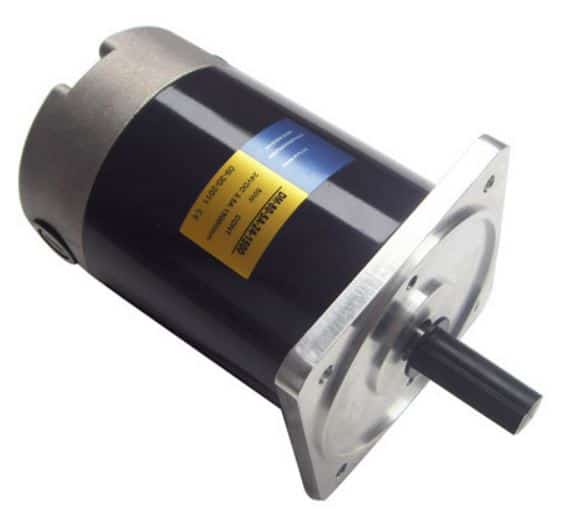
As the name suggests, this type of motor is arranged with permanent magnet poles. In this motor, the magnets are radially magnetized and set on the inner sides of the cylindrical steel stator. Since this motor does not have a field coil, it generates torque by the interaction of armature flux and permanent flux.
PMDC motor consists of armature core, commutator, and armature winding. The operating voltage of a PMDC motor is 6 volts, 12 volts otherwise 24 volts DC supply is obtained from voltage sources such as batteries or rectifiers. PMDC motors are broadly used where small DC motors are required.
Read Also: What are the different types of insulators and their uses?
AC Motor
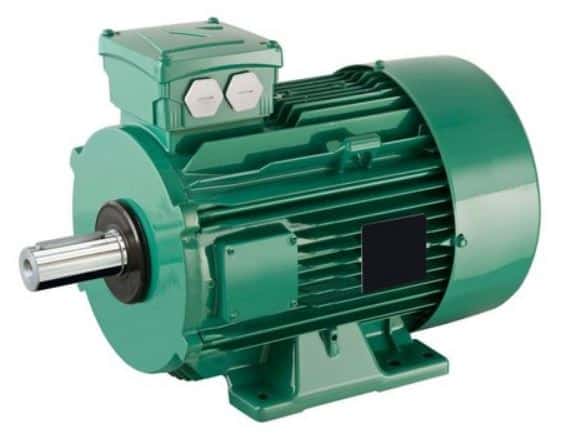
AC motor is an electric motor that uses the electromagnetic induction phenomenon to convert alternating current into mechanical power. It consists of two basic parts, an external stator supplied with alternating current to produce a magnetic field, and an internal rotor connected to an output shaft producing a second magnetic field.
Rotor magnetic fields can be created by permanent magnets, reluctance power, or DC or AC electric windings. 3 phase AC motors are mostly applied in industry for bulk power conversion from electrical energy to mechanical work. The motor requires less power to start and provides greater durability and longevity.
If you’d like to know more, please click on this link: Working Principle of AC Motor
1) Induction Motor
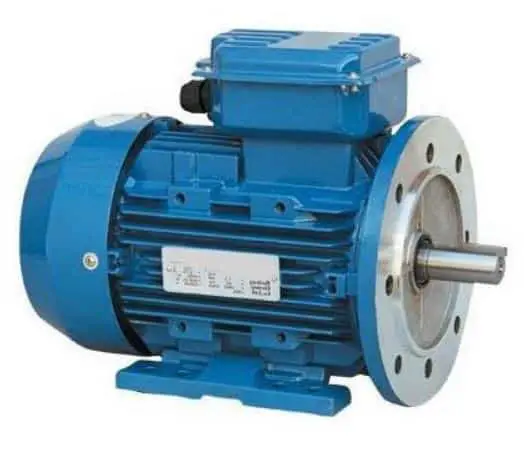
In this motor, an electric current is required to produce torque obtained through electromagnetic induction from the rotating magnetic field of the stator winding. For this reason, an induction motor can be built without an electrical connection to the rotor.
An induction motor is a common configuration used in industrial, commercial, or residential settings. Sometimes these motors are called ‘asynchronous motors’ because they operate at speeds less than synchronous motors. It is a simple, sturdy construction, low cost, and requires minimal maintenance.
a) 1-Phase Induction Motor
As the name suggests, 1 phase AC motor usually works on a single-phase power supply. It consists of single-phase winding on the stator and cage winding on the rotor. When a 1 phase supply is given to the stator winding, a pulsed magnetic field is generated. The rotor does not rotate due to inertia in the pulsating field.
b) 3-Phase Induction Motor
A 3-phase induction motor uses electromechanical energy to convert 3-phase input electrical power into output mechanical power. These motors are motors designed to run on 3-phase AC power supplies that are used in many industrial applications.
It is used in specific applications such as crushers, plunger pumps, cranes, elevators, compressors, and conveyors.
2) Synchronous Motor
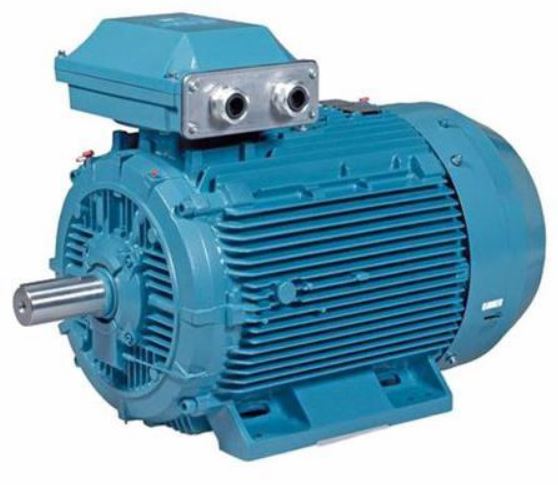
It is defined as an AC motor in which the rotation of the rotor is synchronized with the frequency of the supply. In this type, all the rotations made by the rotor are equal to an integer multiple of the frequency of the applied current.
This motor does not depend on the induction current to work. Unlike induction motors, in this multiphase AC electromagnets are present on the stator, which generates a rotating magnetic field. These motors are commonly used in applications that require a steady and precise motion.
You might enjoy reading as well: What are the types of transformers used in power transmission?
Special Types of Electric Motors
Following are the special types of electric motors:
1) Stepper Motor
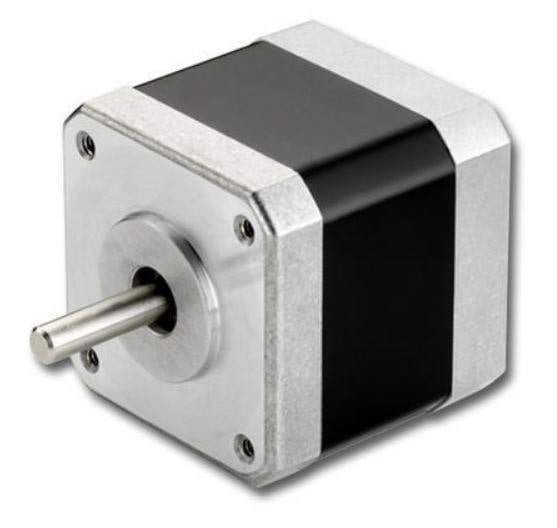
It is a type of motor that divides a complete rotation into several equal steps. The position of the motor can be controlled by running and holding on to either of these stages without any position sensor for feedback, as long as the motor is correctly sized for the application with respect to torque and speed.
It consists of two main components, which are the rotor and the stator. The rotor is the rotating shaft, and the stator has electromagnets that form the fixed part of the motor. These motors can provide flexibility and constant holding torque without the need to operate the motor. They are used in 3D printing equipment, textile machines, and printing presses.
2) Brushless Motor
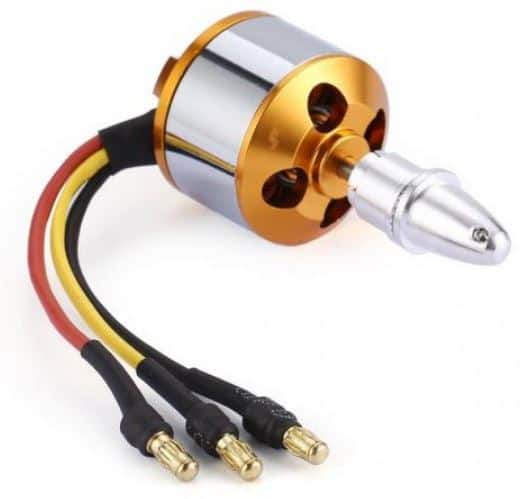
It is a type of DC electric motor that does not have brushes and uses a direct current (DC) electric power supply. The motor contains an electronic controller to change DC currents in the motor windings creating magnetic fields which rotate in space and follows the permanent magnet rotor.
In addition, the controller also adjusts the phase and amplitude of the DC current pulses to control the speed and torque of the motor. These types of electric motors are highly effective for producing large amounts of torque over a wide speed range. Brushless motors are used in many applications, such as hard drives, CD/DVD players, pumps, etc.
3) Universal Motor
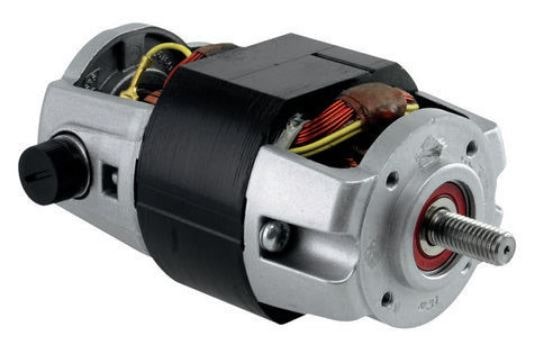
The universal motor is the motor that has the capability to operate on AC or DC power and uses an electromagnet as a stator to create its magnetic field. The motor features variable speed, and high transmission torque and provides a high starting torque. Universal motors are commonly used in vacuum cleaners, sewing machines, etc.
A universal motor is similar in construction to a DC series motor but slightly modified to allow the motor to operate properly on AC power. These types of electric motors are designed to run at high speeds of more than 3500 rpm. This motor can work well on AC supply as both the field coil and armature will have reverse polarity with the current supply.
You might enjoy reading as well:: What is a capacitor? Their working and applications
4) Hysteresis Motor
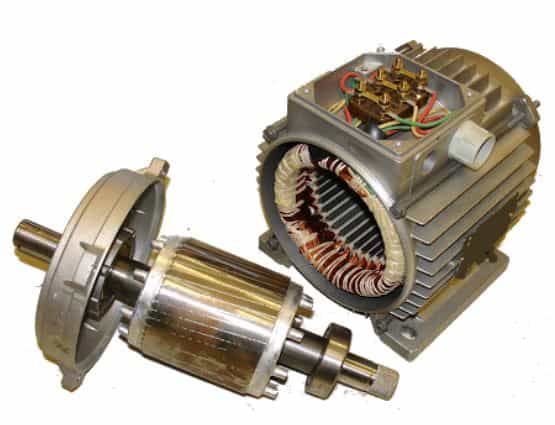
It is a type of asynchronous motor having a cylindrical rotor and works on induced hysteresis loss in a steel rotor with high retention. It can use either one phase or three phases and provides a noiseless operation to the environment, plus it maintains a constant speed.
In addition, these motors are durable and reliable in-process and capable of running at various speeds. The torque generated in the motor is due to hysteresis and eddy current which is induced due to the stator winding. Hysteresis motors are used in sound recording and producing applications such as electric clocks, tape recorders, record players, etc.
5) Reluctance Motor
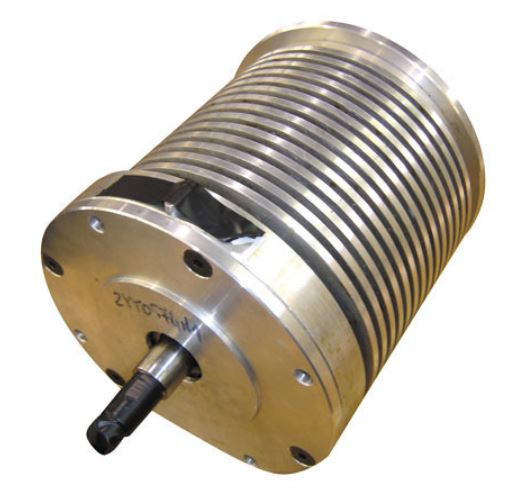
Reluctance motors have non-permanent magnetic poles on a ferromagnetic rotor that does not have windings. The power these motors deliver is high at a low cost, making them attractive in many applications.
The working principle of this motor is that, whenever a magnetic material is located within a magnetic field, it always moves up in a low reluctance manner. The main drawback is that it has a high torque ripple when operated at low speed, and the torque ripple causes noise. It is used for many applications, such as clock timers, signaling devices, recording equipment, etc.
6) Linear Motor
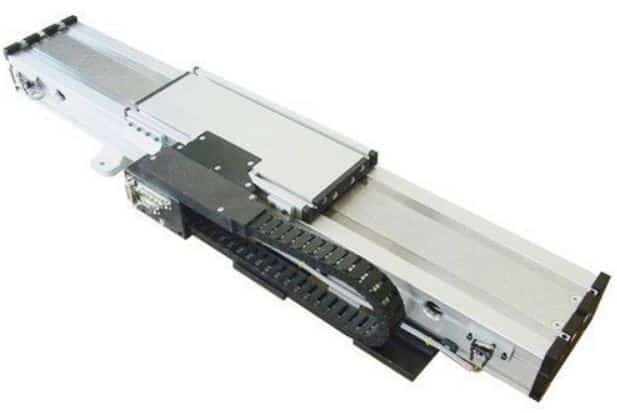
A linear motor consists of a rotor and stator in straight form, as you can see in the above figure. Thus, instead of generating a torque by rotation, it generates a linear force along its length. However, these types of electric motors are not necessarily straight.
In particular, the active section of a linear motor is terminated, whereas more traditional motors are arranged as a continuous loop. Many linear motor designs fall into two major categories, low-acceleration, and high-acceleration linear motors. These motors can be used to activate belt conveyors, shuttles in textile looms, and equipment that require linear motion.
Wrap Up
As I already said about motors, they are extremely important in modern life. The electric motor uses DC or AC current to generate mechanical energy by using magnetism mixed with electric current. These are highly efficient devices based primarily on their operating conditions and the size of the motor.
So, for now, I hope I’ve covered everything you were looking for about “Types of Electric Motors.” If you still have any questions about this topic, you can contact us or ask in the comments. If you like it, then share this with your friends.
Want free PDFs direct to your inbox? Then subscribe to our newsletter.
Download PDF of this article:
You might be interested in reading more on our blog:
- What are the different types of CNC machine and their working?
- How many types of grinding machines are there?
- Types of Drilling Machines: Their Working and Applications
- 12 Important Parts of DC Generators & Their Functions [PDF]
- What Are The Main Parts of Transformer & Its Functions?
- 25 Different Types of Electrician Tools [Names & Uses]
- Different Types of Circuit Breakers: Working & Applications
- What are the Types of Insulators Used In Power Transmission?
its helpful, thank you
You’re welcome.
This is very interested,I wish to know more about motor
Thanks for your response. You can check out the articles in our blog, we have written on this topic.